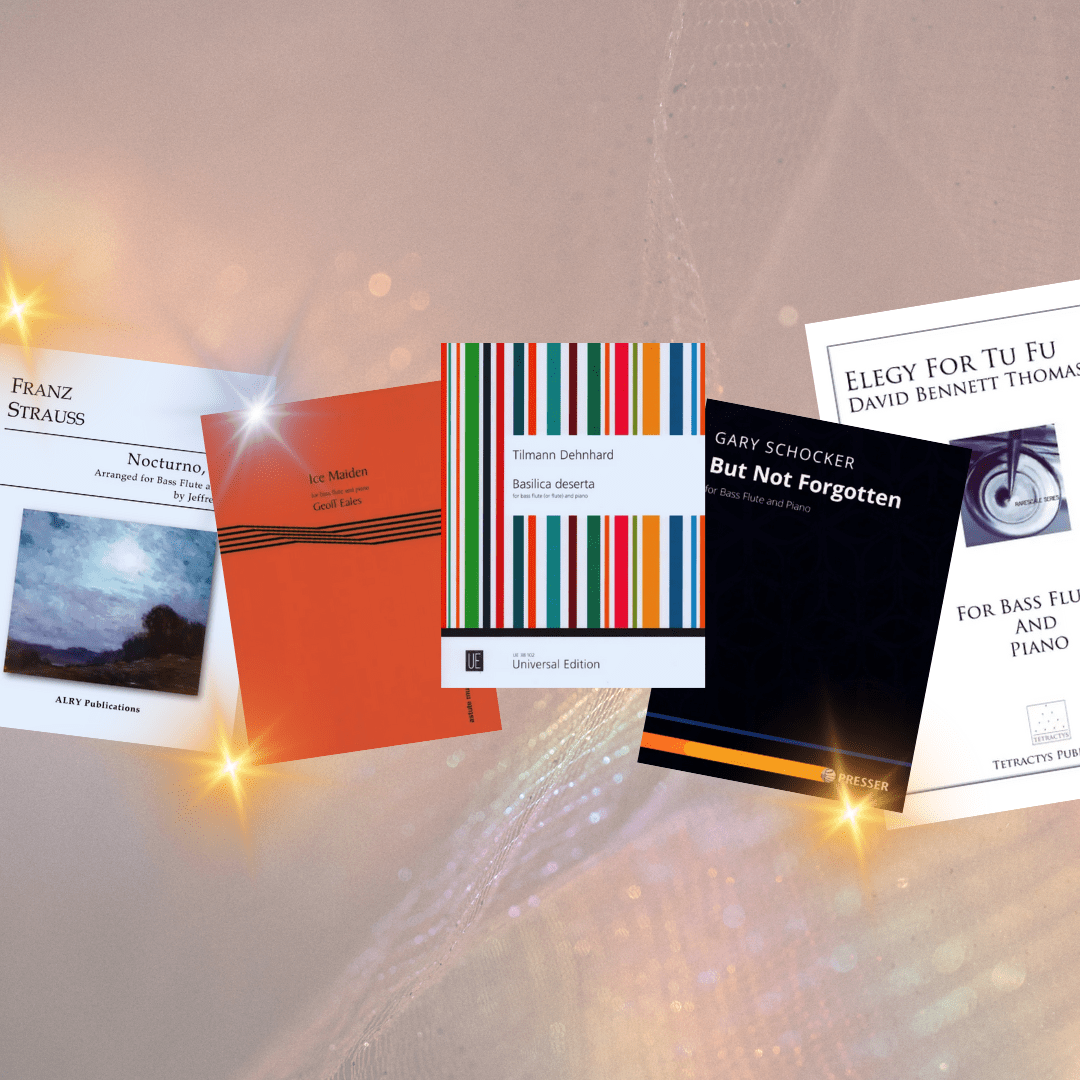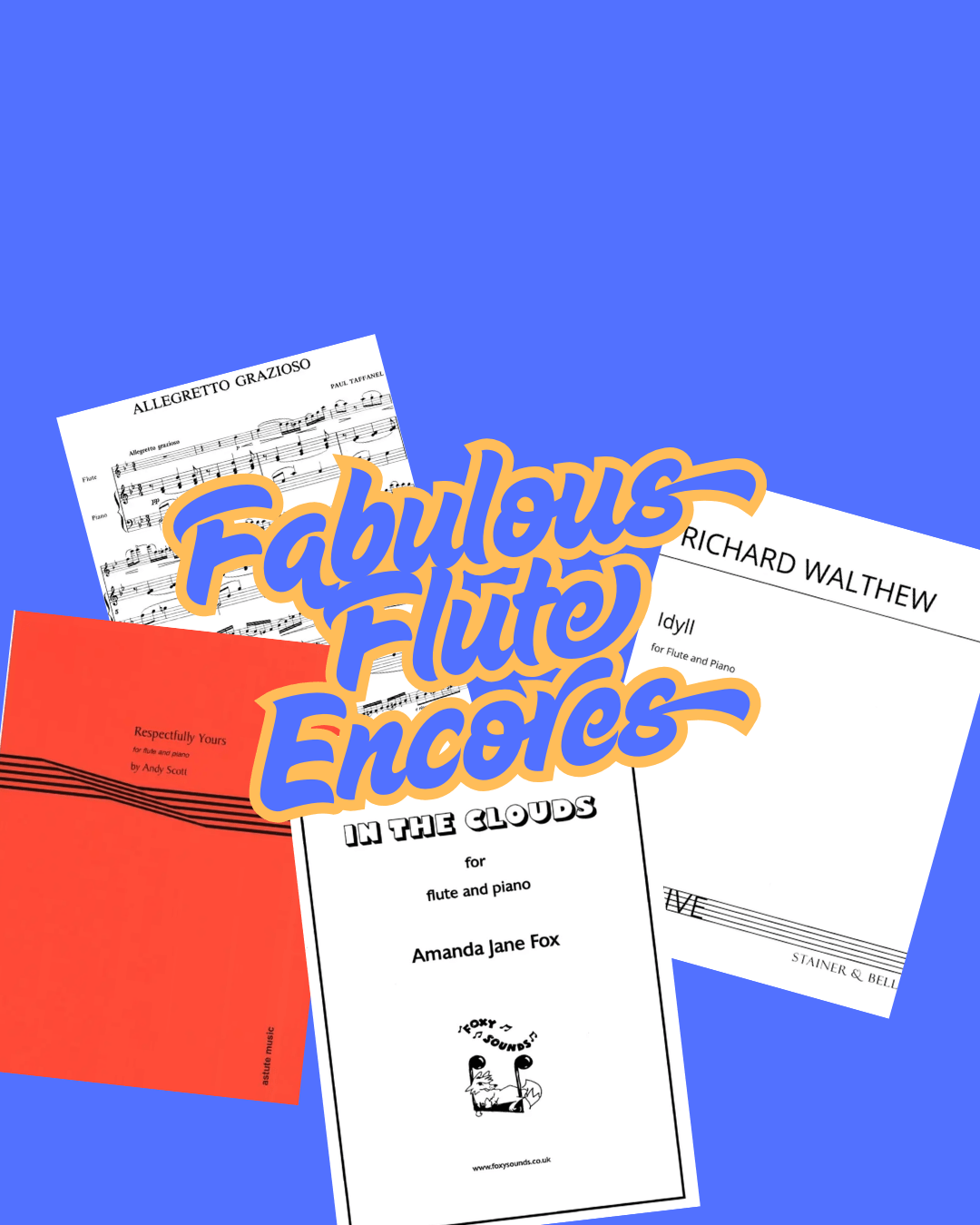-

Enchanting works for bass flute and piano
Discover the captivating sound world of the bass flute with these exceptional pieces.
-

Fabulous Flute Encores!
After your blockbuster recital, you might want to cap it off with a beautiful encore — these are absolutely perfect!
-

Beautiful Flute Music for Beautiful Weddings
It’s such a privilege to be asked to play for a wedding and these books are perfect for adding an extra sparkle to anyone’s special day!
-

Five fantastic flute works to mark International Women’s Day.
Celebrate the music of exceptional British women with their wonderful flute pieces!
-
Five British classics for flute.
Discover the rich tradition of British flute music with these captivating pieces that are guaranteed to please!
-
Five Flute Bestsellers 2024
2024 produced some fabulous flute music and these are the best!
-
Five Christmas Crackers for Flute Players!
Christmas is the season of giving, and any flute player would be thrilled to receive these wonderful books. They’re gifts that will be enjoyed all year long and beyond!
-
Harmonics for flautists
Harmonics are our best teachers! We can learn so much about how we are using (or not using) our airstream, intonation, note beginnings and endings, legato, and more! Because the flute has many…
-
Five sumptuous pieces for solo flute!
Performing solo flute music is incredibly rewarding and always makes a refreshing contrast in a recital. Discover this diverse collection of beautiful music and bring vibrant new colours to your repertoire.
Trending Posts
 There is a wealth of imaginative music available for solo piccolo so explore these wonderful pieces…
There is a wealth of imaginative music available for solo piccolo so explore these wonderful pieces… Playing a musical instrument is amazing. It develops so many skills, and not just musical ones: it c…
Playing a musical instrument is amazing. It develops so many skills, and not just musical ones: it c… Buying your first flute can be daunting: there are so many different makes, models and types of flut…
Buying your first flute can be daunting: there are so many different makes, models and types of flut…
Trending in Flute Music
 There is a wealth of imaginative music available for solo piccolo so explore these wonderful pieces…
There is a wealth of imaginative music available for solo piccolo so explore these wonderful pieces… Flute, cello and piano together make a highly effective trio, and it doesn’t have to be all Baroque…
Flute, cello and piano together make a highly effective trio, and it doesn’t have to be all Baroque… This blog was first written in September 2018 and has been updated for 2022. September is such an ex…
This blog was first written in September 2018 and has been updated for 2022. September is such an ex…
Accessories Building A Flute Library Composer Profiles Exam Music Extended Techniques Flute Ensemble Music Flute History Flute Life Flute Music Flutes Flutes Guest Posts Headjoints Hidden Gems Hints and Tips Music Recommendations New Music Piccolos Player Profiles Practice Tips Teaching Uncategorized Workshop
